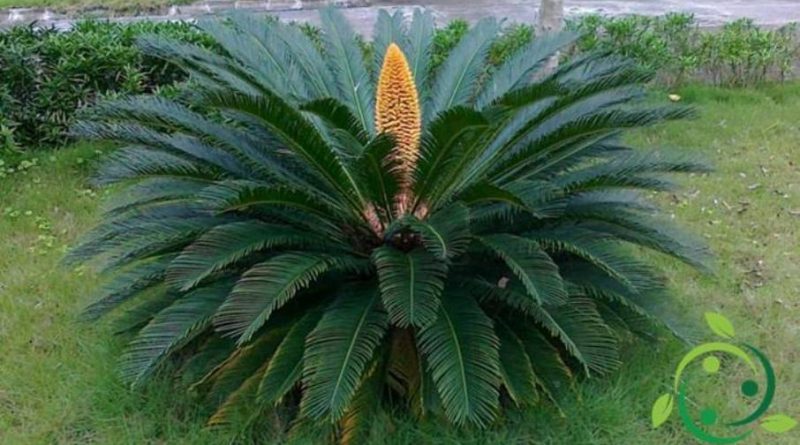How to grow Cycas
How to grow Cycas
Cycas are a genus (Cycas L., 1753) of gymnosperm plants originating in Asia, Africa and Oceania. The genus has about a hundred different species, of which the best known and used as ornamental plants are the Cycas revoluta and the Cycas Angulata. These are slow-growing woody plants similar to the Palmaceae, with sharp leaves of a beautiful intense and glossy green color, widespread in many areas of the world.
The Cycas is characterized by having a trunk covered with a rough bark, very robust and with a diameter that can reach up to 20 cm; the leaves are sharp and pungent and develop in width, with the foliage that can even exceed the diameter of one meter. At the center of the stem there is a limited amount of evergreen leaves, at the end of which a medium-sized spine is attached. In this sheet we will see how to grow Cycas, following the most suitable agronomic techniques.
Please note that Cycas is a very resistant plant that can be grown either in gardens or in parks or even indoors, with a rather slow growth and the maximum height it can reach is about three meters; it is a “prehistoric plant” in that 250-million-year-old Cycas fossils have been found, which show that, despite climate change and deforestation, these plants are among the most resistant species ever discovered by man.
What is important is that they are exposed to direct sunlight, since they prefer very hot climates. If it is grown outdoors, make sure the plant has enough space to grow its foliage. This could even reach a meter and a half in length. As for the vases, it is preferable to choose intermediate sizes, not too big or small.
The Cycas is a dioecious species, therefore with male plants and female plants that differ in some aspects, especially in the foliage.
The flowering of the plant occurs in the spring period, but in plants that already have an adult age.
The male plants are presented with very compact white or light yellow cluster flowers, while the female species have a more particular flowering, with elements similar to small leaves united in a roundish agglomerate.
As far as the propagation of Cycas is concerned, it should be remembered that this plant can be multiplied throughout the year, by cutting off the numerous shoots or shoots that grow at the base of the mother plant.
The sucker must be cut with a well sharpened and disinfected knife and placed in rooting, in a fertile substrate mixed with peat; the optimal temperature for this operation is between 24 and 27 ° C and therefore in the spring or even better between June and July.
To encourage rooting and avoid excessive expenditure of energy by the plant it is good to leave only two leaves and cut off the others.
After the implant place the containers or pots in shady places until the roots take root and water regularly. Once rooted, which is evident with the emission of 2 – 3 new leaves, the Cycas must be transplanted into slightly larger pots than the previous one, or in full earth, and reared as the mother plant.
Reproduction of cycads with mother plant detachment is recommended for two reasons:
– adequate development of new seedlings without competing for light, air and nutrients with the mother plant;
– to avoid the weakening of the mother plant itself.
As far as irrigation is concerned, these should be done only when the soil (or the potting soil) is dry.
Fertilization, although not necessary as the Cycas is a plant that can vegetate in very arid soil conditions, can be done in spring or early winter with organic fertilizers such as earthworm humus, compost, or manure biological.
In any case, this technique becomes more necessary in pots and in any case always before repotting, which must be carried out every 3-4 years, each time choosing a container with a larger diameter.
Remaining on the subject of nutritional needs, the deficiencies that can be most manifest are those related to the lack of manganese: in this case the color of the leaves becomes reddish. The symptoms, more or less serious of nutrient insufficiency, in fact appear on the leaves of the Cycas , whose color changes depending on the substance of which the plant is lacking. For example, if nitrogen insufficiency occurs, the foliage becomes light green and yellow.
Among the main plant diseases and health problems, attention must be paid to pest attacks such as white cochineal. This insect, in the case of the Cycas, can be deleterious, as it can affect the foliage and cause a slowdown in growth. As always, the best solution to get rid of these small parasites is to use natural substances. The most suitable is the nettle macerate or garlic, pure Marseille soap, neem oil or, still, macerated fern. A final warning: The fruits produced by the plants of Cycas are very toxic and represent a danger for the animals Pets. These small orange spherical berries are very poisonous. If ingested, they can cause severe respiratory failure. Despite this, it is thought that these fruits were one of the main sources of nutrition for dinosaurs, in prehistoric times.

